We’ve been to Yellowstone National Park several times, but never to look for wildflowers. There are so many amazing natural wonders to see, with the geysers, wildlife and waterfalls, that most people don’t see the wonderful variety of flowers that are all around. THIS time we hiked up Mt. Washburn, and found a wider variety of wildflowers than I expected on this dry, high altitude hike.
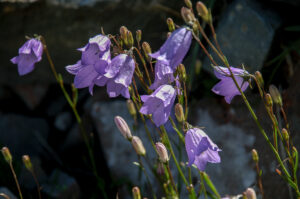
Click on any photograph to see a larger image.
The Hike
There are two trails going up Mt. Washburn, starting at either Chittenden Road or Dunraven Pass. We didn’t know which was best, so we picked Chittenden Road because that was about a half mile shorter.
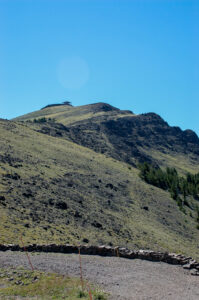
You should start this hike in the morning because the wind picks up in the afternoon, and this is a VERY exposed hike. On the way down, in the afternoon, it was getting pretty warm. There are a few trees at some points of the trail, but not many. For the most part you are hiking up a service road that leads to the fire lookout at the top of the mountain. The terrain is, for the most part, alpine tundra. Dry and wind swept.
From the parking lot you’ll be climbing about 1400 feet if you get to the top. The final elevation is 10,243 feet. If you aren’t acclimated to the elevation (we weren’t!) you just have to take it slow and easy. It isn’t a hard trail other than the altitude. From this side it is about 3.1 miles to the top.
There were wildflowers all the way up, although there usually weren’t masses of color. You have to keep your eyes open, and pop off onto the side spurs that you may find on the trail.
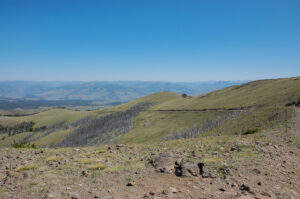
Nearer to the top the trail gets steeper, and there were times when we thought about turning back. I’m glad we kept going, because the view from the fire lookout at the top is wonderful.
The next time we visit here we’ll take the trail from the Dunraven Pass side. We did stop at the trailhead later that day, and there were quite a few flowers right at the parking lot. There is a spring there that provides moisture for a different selection of flowers than what we saw on the drier mountain trail, and it looks like at least part of this trail goes through the forest.
Timing is Everything
We visited Mt Washburn at the end of July. The Chittenden Road side was dry, but there were still a lot of flowers. The Dunraven Pass side was moister (at least at the beginning) and had a greater variety of flowers. Earlier in the year you may find that it gets too cold near the top of the mountain for much to be blooming. Later in the year it is going to be very hot and dry.
Directions
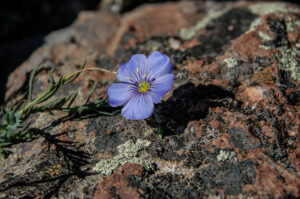
Mt. Washburn is in the Tower area of Yellowstone National Park, between Tower Junction and Canyon Village.
The Chittenden Road parking area is 8.7 miles south of Tower Junction. You will turn off the main road and drive up a gravel road to the parking area, which has restrooms.
The Dunraven Pass parking area is 13.4 miles south of Tower Junction. This parking area is right on the main road, and also has restrooms.
Chittenden Road has more room for cars, and tends to be less crowded in the morning. This route is also used by park vehicles (not common) and bicycles.
Mt Washburn Wildflowers
Please feel free to help me with the identification of any “unidentified” flowers listed here, as well as correcting any errors I may make. Click on any photograph to see a larger image. I’ll start with a few favorites, and then the “gallery”. All pictures were taken with a Nikkor 18-135mm zoom lens, or a Nikkor 60mm closeup lens.
There were quite a few different asters along the trail, at just about every elevation.
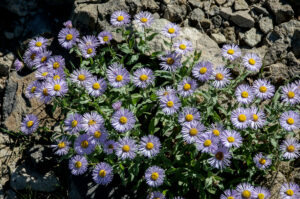
Fireweed is very common in the Park. About half way up the trail there was an interesting stand of trees where a fire must have come through a few years ago, with Fireweed showing why it got its name.
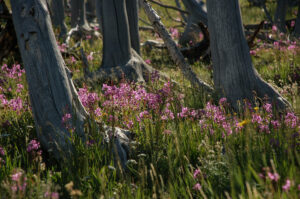
We did see a nice variety of smaller mammals such as marmots and golden mantled ground squirrels. The most interesting encounter was this red fox. Looking back on the trail we were excited to see this fox heading up the hill. Hold still so you don’t scare it away? Well, the fox just kept on trotting up the trail towards us, passing us by without even a glance. He passed within a few feet of us, not scared at all.
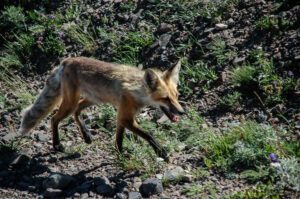
There was a nice patch of Larkspur right by the trail. I always seem to have trouble getting a good picture of these flowers.
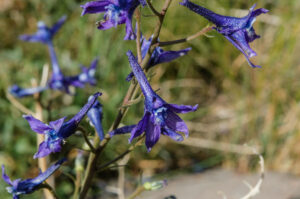
Most of the flowers we found were surviving on the barren, exposed alpine tundra, but at the Dunraven Pass trailhead there was a nice spring, where we found a different selection of flowers like this White Bog Orchid. I’m always amazed when we find orchids in the wild.

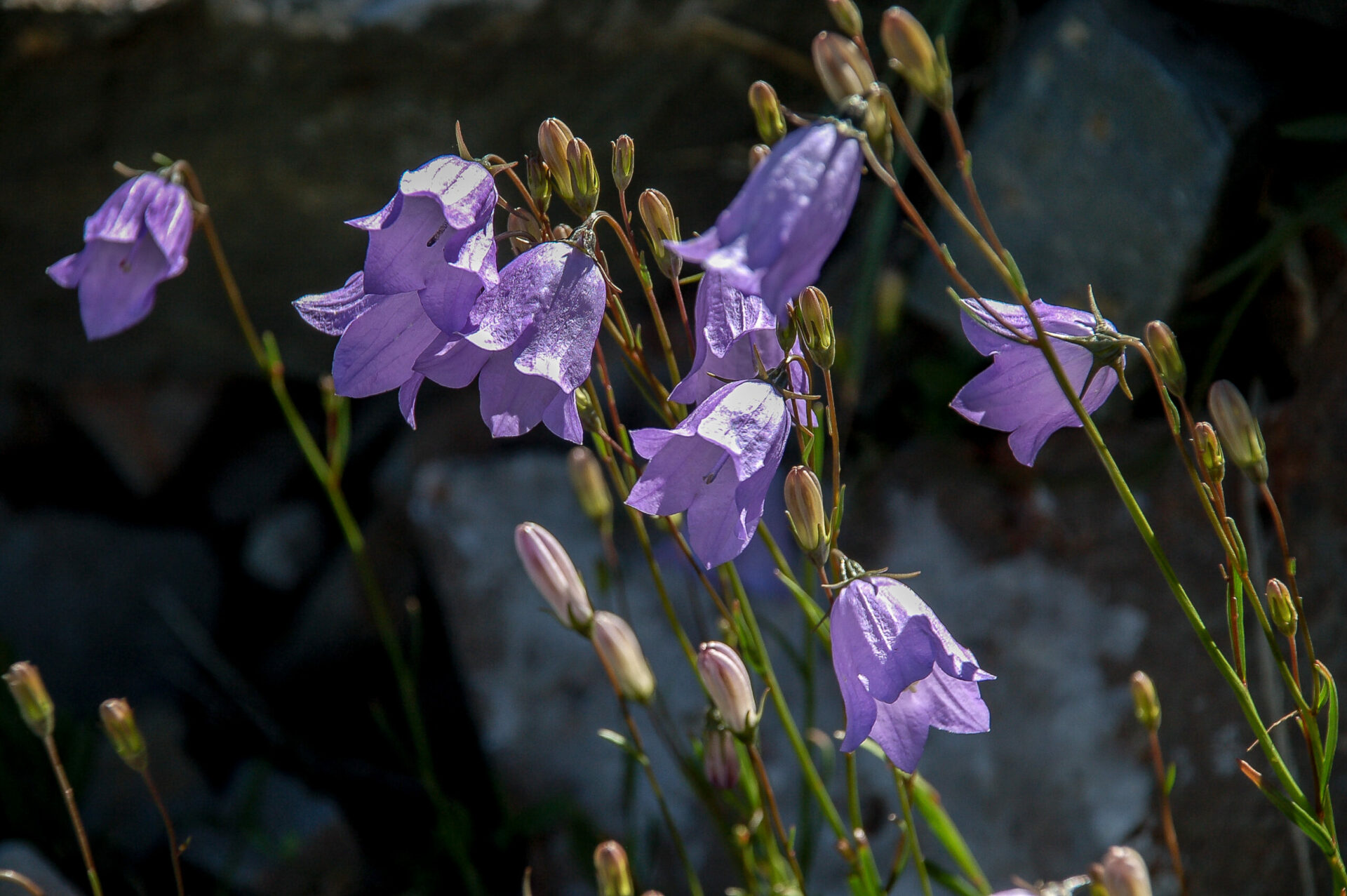



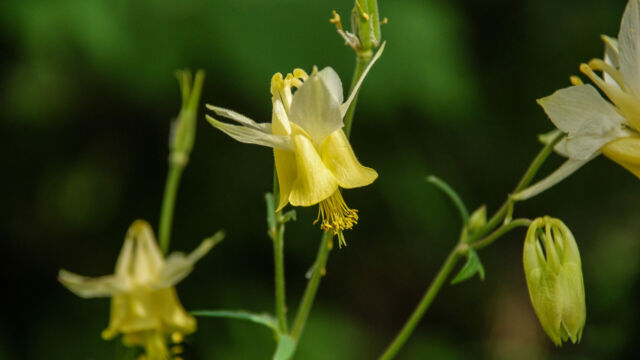

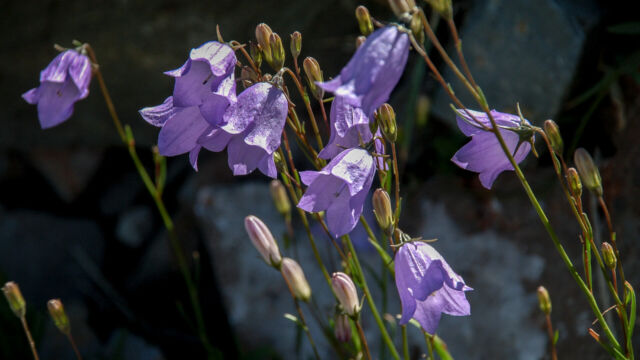


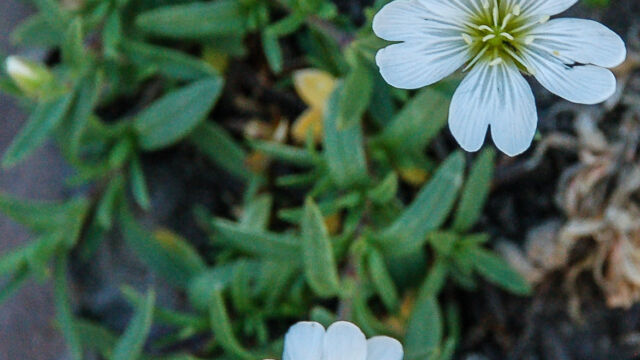

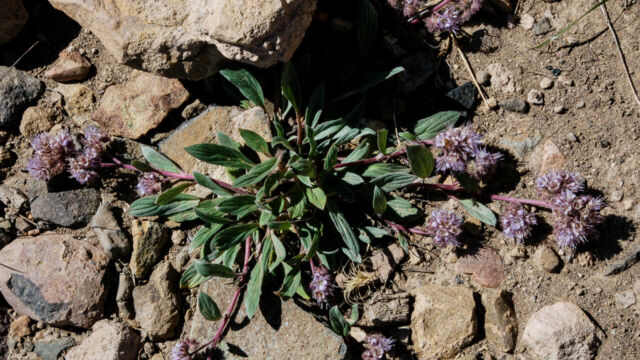
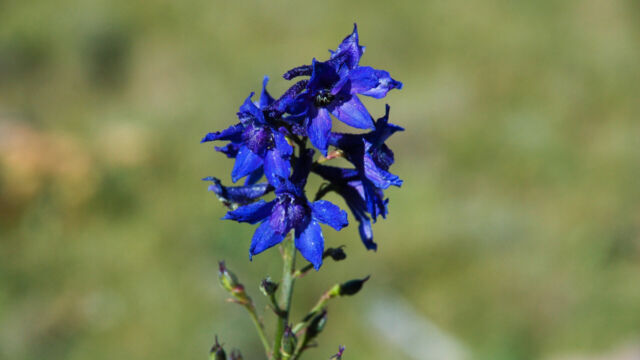
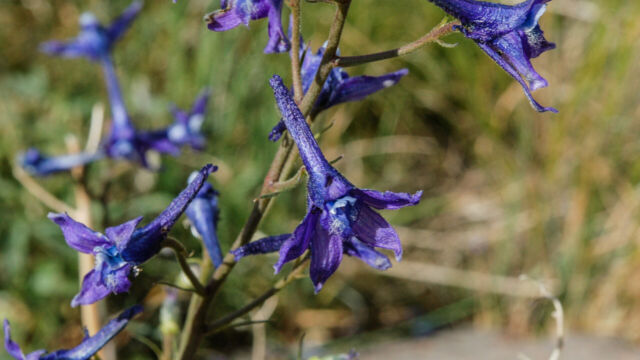
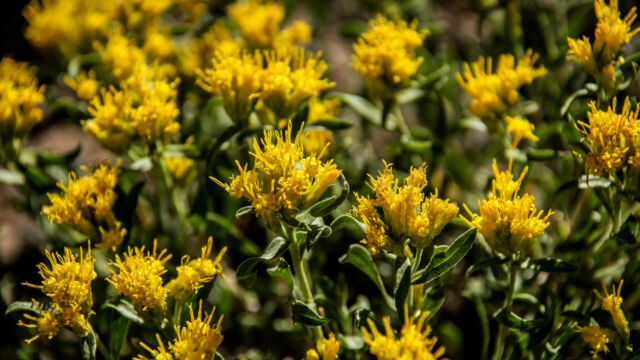
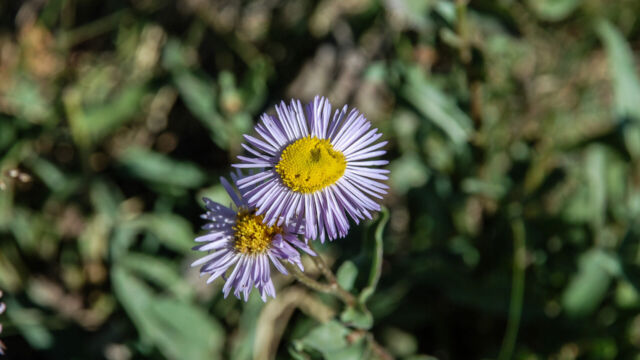
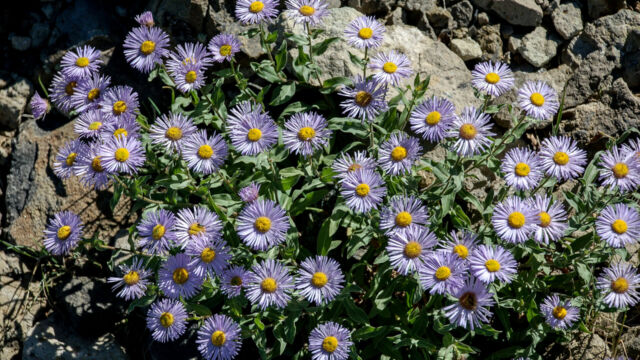
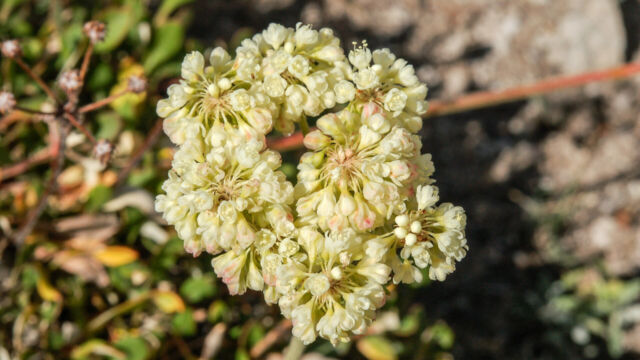

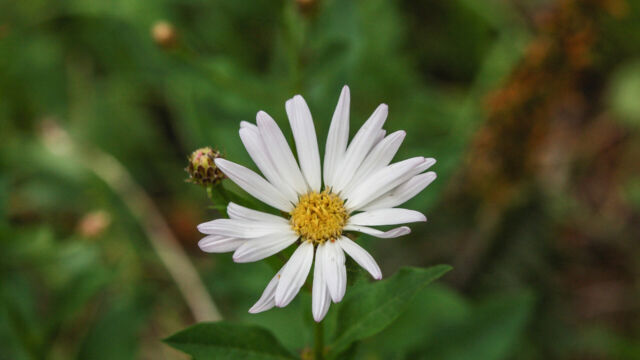
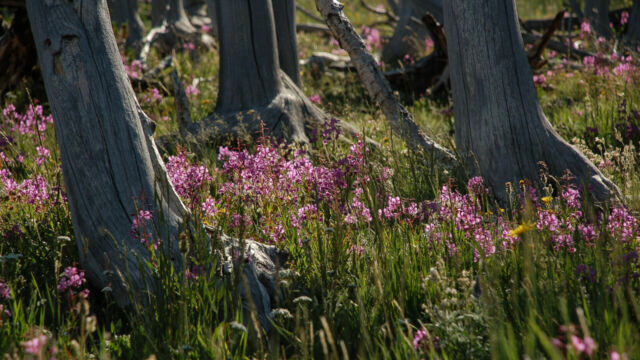
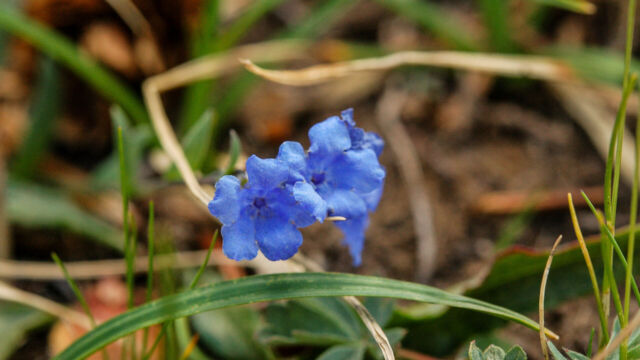

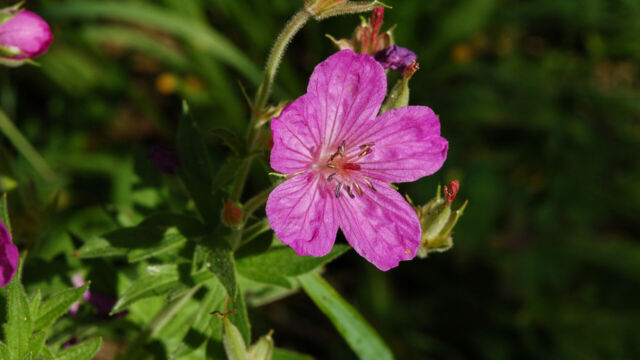

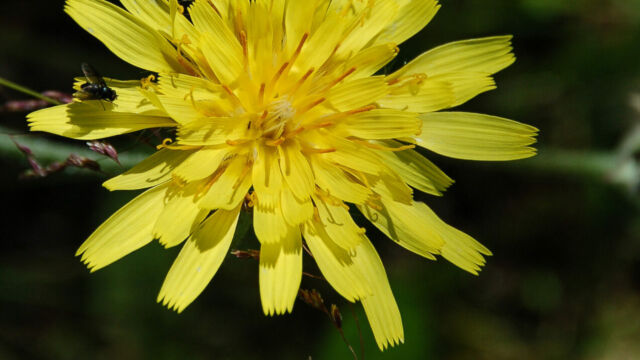

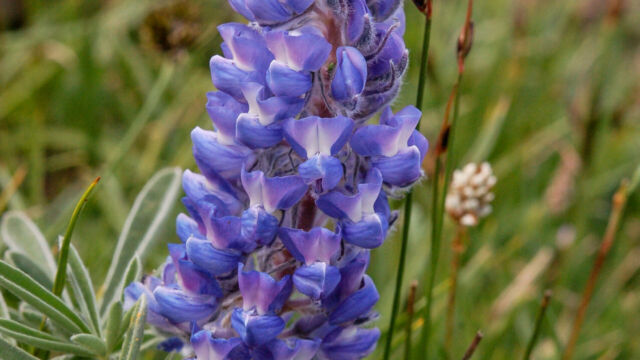

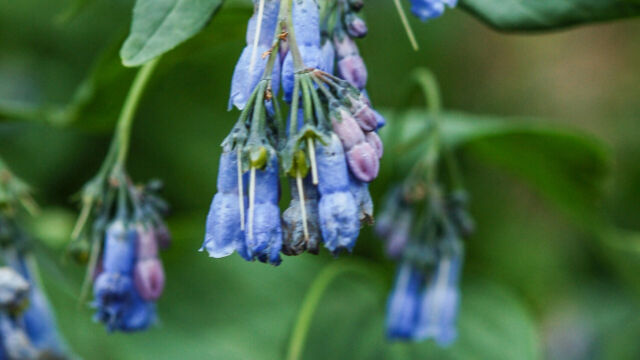

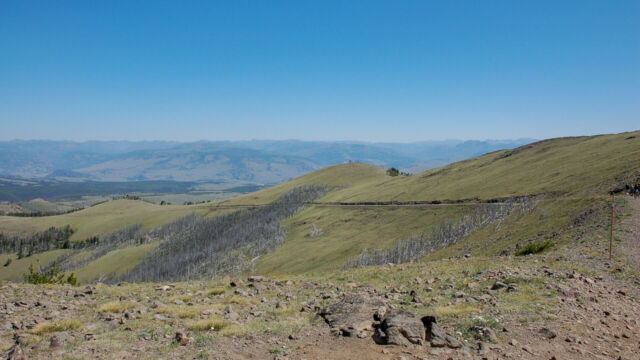
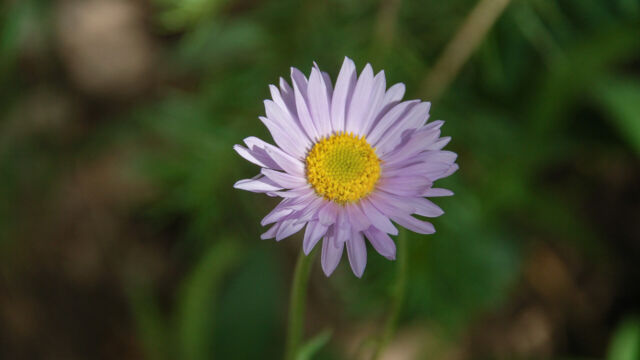
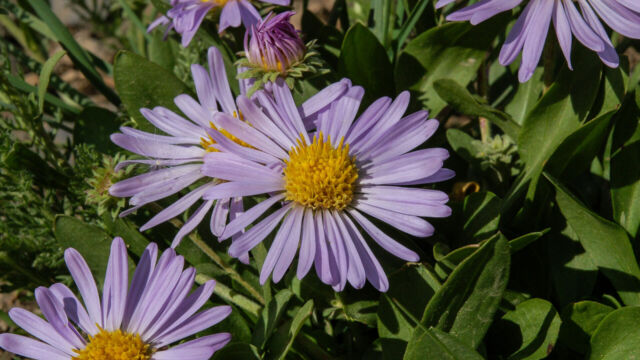
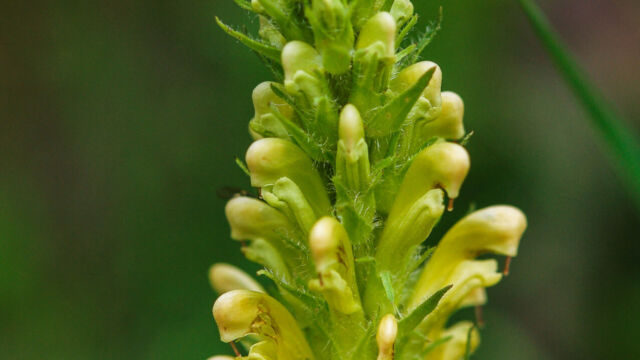

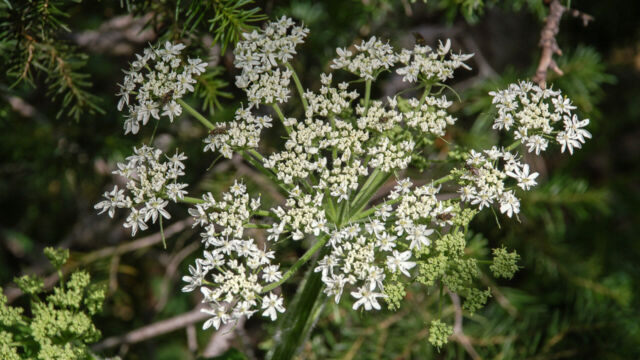

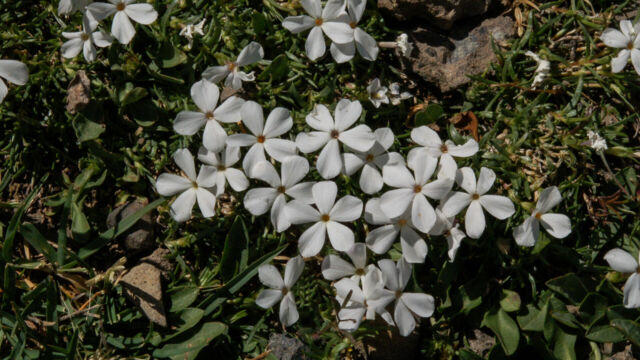




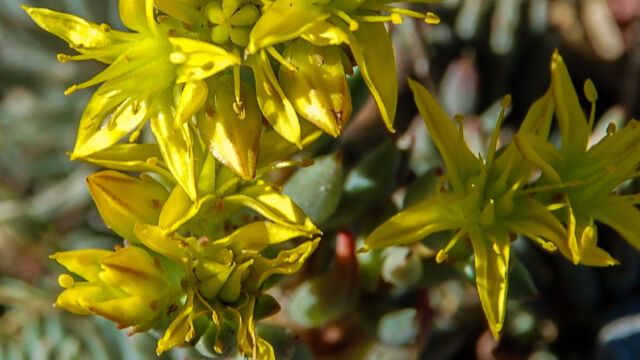
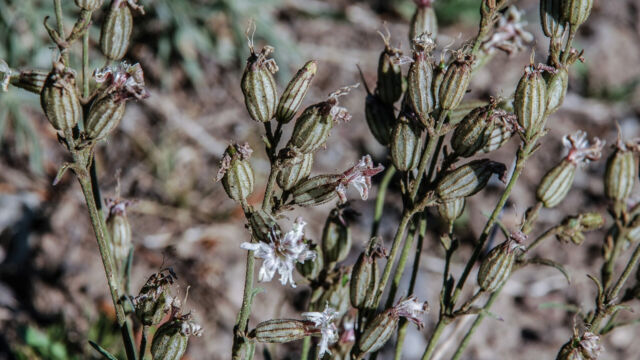

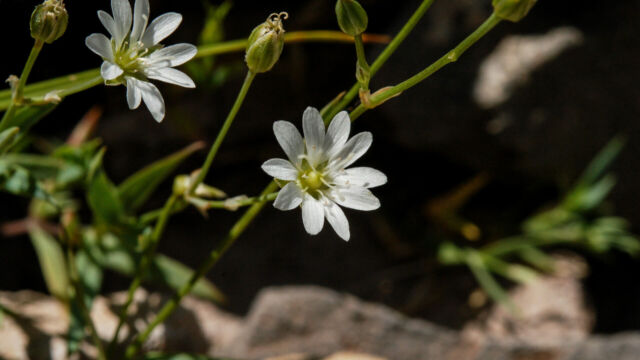
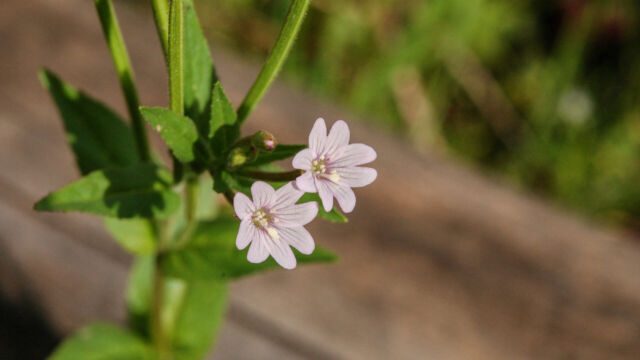

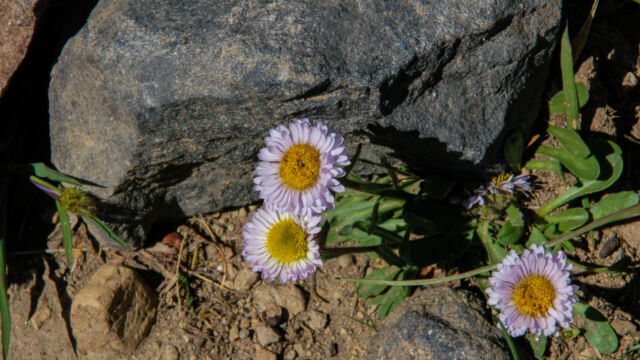
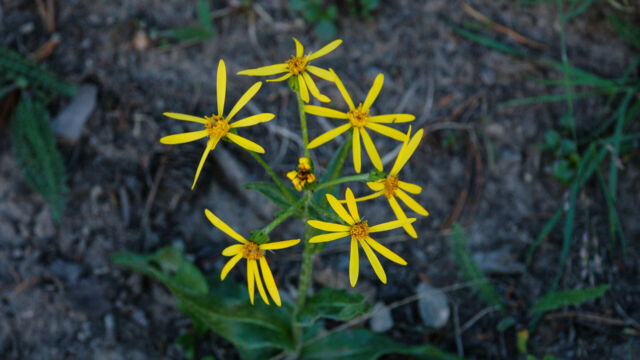


Wonderful! Thank you for such a beautifully colorful hike to the top! Your web pahes will be recommended!
You are welcome!